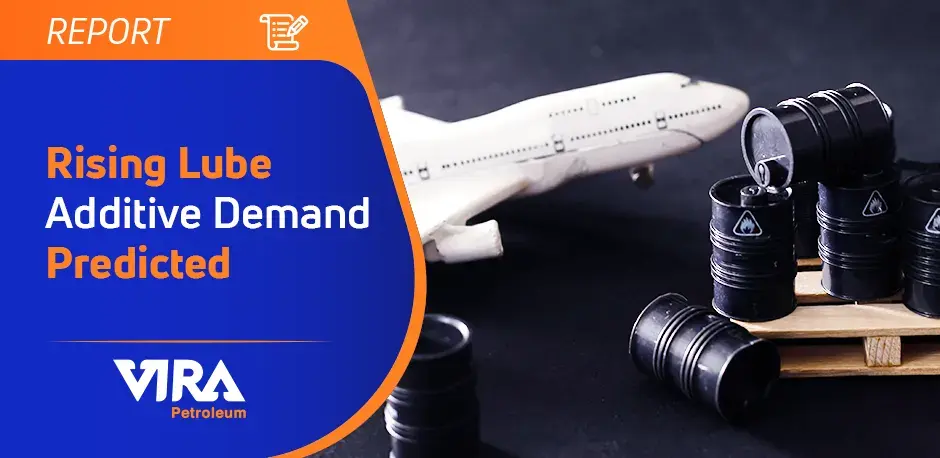According to a recent webinar by Kline & Co., global lubricant additive consumption surpassed 4 million tons in 2022 and is expected to reach nearly 4.5 million tons in 2027, approaching pre-pandemic levels. Additive companies are presented with various opportunities, such as the need to upgrade lubricant specifications, increasing demand for fuel efficiency and energy savings, and the growing trend towards sustainability. Lubricant producers are also seeking to formulate with API Group II and III base oils. However, Kline & Co. predicts that global lube additive demand will remain below 2018 levels by 2027 due to several factors.
“Part of this is due to supply chain issues and things that have happened over time – the economics globally haven’t been too great as of late”
David Tsui
During a webinar on April 6, David Tsui, a project manager in Kline & Co.’s energy business, discussed a report the company published in March.
Order: rubber process oil
David Tsui, a project manager in Kline & Co.’s energy practice, also cited the implementation of IMO 2020 as a key factor. This international convention required ocean-going ships to install scrubbers or switch to cleaner fuels to reduce air emissions. As a result, many in the industry opted for cleaner fuels, which reduced demand for detergents in marine cylinder oils. Furthermore, advancements in engine oil formulation for both light and heavy-duty engines led to more optimized additive treat rates, albeit slightly lower.

According to Kline, the lubricant additives market is highly diversified with varying levels of demand across different sectors. Heavy-duty motor oils were estimated to consume 1.3 million metric tons of lubricant additives in 2022, while passenger car motor oil, including for 4-stroke engines, used 1.1 million tons. Metalworking fluids consumed nearly 800,000 tons, followed by industrial engine oils with 500,000 tons, and other automotive lubes with 300,000 tons. The remaining 200,000 tons were used in other types of lubes. The Asia-Pacific region, led by China, emerged as the largest consumer of lubricant additives, followed by North America, Europe, Africa and the Middle East, and South America.
While the market presents significant opportunities for growth, it also faces several challenges. One major challenge is the impact of vehicle electrification on the demand for lubricant additives. Additionally, the projected future decline in engine oil consumption and the potential health, safety, security, and environmental issues pose significant challenges to the market. For instance, the European Commission is exploring the labeling of lithium hydroxide as a possible reproduction toxin, which could significantly impact lithium greases and other aspects of the industry. It is crucial for companies in the sector to be vigilant and proactive in monitoring these changes that may affect their production plants or business plans.
Order: recycle base oil
Expanding on the previous paragraph, David Tsui of Kline & Co.’s energy practice highlighted that the lubricant additives market faces several challenges, including the effects of vehicle electrification and anticipated decreases in engine oil demand. However, he also noted that the increasing demand for fuel-efficient and eco-friendly lubricants offers significant growth opportunities. The market can capitalize on this trend by upgrading product specifications to meet increasingly stringent standards, promoting energy savings, and formulating lubricants with API Group II and III base oils.
Tsui emphasized the continued importance of internal combustion engines despite the rise of electric vehicles. Meeting new fuel economy and emission standards will require engine and lubricant improvements, particularly as original equipment manufacturers (OEMs) introduce new engines that necessitate specification changes. Governments and businesses’ growing focus on sustainability and carbon neutrality is also expected to affect the lubricant additives market.

In this context, Tsui suggested that the adoption of Group II and III base oils, especially in industrial fluids, presents an opportunity for additive package formulations. Many industrial products continue to use Group I base oils, but the increased availability of Group II and III alternatives could facilitate more sustainable and efficient lubricants.
However, companies must remain vigilant about emerging trends and regulations that could affect their plans for production or product formulation. For example, the European Commission’s investigation of lithium hydroxide as a potential reproduction toxin could impact lithium greases and other related products.
read more: Base oil and additives
According to a recent study titled “Global Lubricant Additives: Market Analysis and Opportunities,” the demand for lubricant additives for electric vehicles (EVs) was modest in 2022. However, there is a growing demand for EV fluids, which is expected to increase significantly in the future. Tsui pointed out that many manufacturers of EVs still use internal combustion engine fluids and greases, which are not specifically designed for EVs. This presents opportunities for additive industry companies to tailor their products to meet the specific needs of EVs.
As EVs get older, issues that are not common with ICE vehicles may arise, which requires specific type fluids. Currently, most EV motors tend to be air-cooled, with the coolant solely used for cooling batteries. However, there is a potential transition towards multi-use fluids that are meant to cool the transmission, lubricate gears, cool the motor, and also cool batteries. This transition may require oil-based fluids that require additives.
The global lubricant additives industry has two supplier categories – component suppliers and package suppliers. According to the study, Lubrizol is the leading lubricant additive supplier, followed by Infineum, Chevron Oronite, and Afton Chemical. Other players in the market include Lanxess, BASF, and several other smaller players. Tsui emphasized that the global lubricant additives industry must monitor and be aware of changes that could impact their chemistries, including new regulations and environmental concerns. He noted that sustainability is an increasing focus of governments and businesses, which will impact the lubricant additives market.

